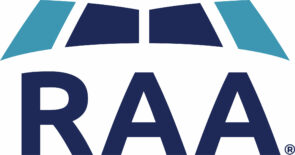4 TIPS FOR YOUR TRANSITION FROM THE RIGHT SEAT TO THE LEFT SEAT
- Posted by Gary Krasnov, AIF®, CLTC®
- On May 7, 2018
- Captain, financial planning, left seat, planning, right seat, upgrade
Unlike like most professionals, pilots typically experience one big promotion during their flying career: the move from First Officer to Captain. This will be an exciting time in your life and one which should be enjoyed, but this upgrade also provides many personal, professional, and financial changes for you to consider.
With this in mind, we wanted to share tips we’ve picked up over the last three decades from working with the airline community that can help you make the most of this promotion.
Here are four tips for adjusting to the role of Captain gathered from the thoughts and observations of Captains who have come before you.
1. MINDSET CHANGES
First of all, it’s completely normal to feel nervous about being a Captain. We consider this nervousness a good thing, as it shows you are mindful of your performance in the cockpit, your fellow crew members, and the thousands of passengers who place their trust in you each year.
It’s also important to realize that in today’s modern aircraft, what separates the good pilots from the great pilots is not flying ability. Many times, it comes down to decision-making, communication skills, and your ability to manage distractions. Putting your focus on these three key areas during your first months as Captain can have positive impacts on your entire career.
2. COMMUNICATION IS KEY
As a First Officer, you have worked with Captains who possessed a wide variety of personalities and leadership styles. You probably liked some better than others, but you always found a way to work with them. Now the dynamic has changed, and you will need to get along with First Officers who may or may not like you.
Take time to reflect on the Captains you respected and enjoyed flying with throughout your career. What did they do or say that was particularly effective? What did you like about working with them? Once you’ve boiled down some key points, add these skills to your own “communication toolkit.”
3. LEADERSHIP, SAFETY, AND PROFESSIONALISM
Perhaps the most important quality great Captains possess is leadership ability. Your crew will take cues from you on how to treat passengers and fellow employees, as well as how to handle the difficult situations which will inevitably arise. Your professionalism and the way you conduct yourself will become theirs, and they will learn a great deal from your example.
Again, it is wise to consider the Captains you have worked with in the past that showed exceptional leadership qualities during times of stress. How did they lead the crew through these issues? How did they maintain a professional and safe environment for passengers?
4. FINANCIAL AND TAX CONSIDERATIONS
The promotion to Captain will come with a well-deserved pay increase. Pilots flying narrow-body aircraft can expect an average pay raise of 46% when they are promoted from First Officer to Captain, and those flying wide-body aircraft often see a 37% pay increase on average. Regardless of the aircraft you are flying, this raise will fundamentally change your financial life.
It can be tempting to go out and buy a new home or car to celebrate your promotion, but you should also be thinking about how this new-found wealth can positively impact your long-term financial health. What was your financial life like as a First Officer? Is there room for improvement? Did you find managing your investment accounts, tax strategies, or insurance needs stressful? If so, consider the role that an advisory firm like RAA can play. A trusted advisor can strengthen and simplify your financial life, allowing you to focus on your career, family, and passions. An advisor can also help you adjust your overall financial and tax plans to account for this significant change in income.
If you found these tips helpful, you’ll find even more information in our booklet From the Right Seat to the Left Seat to help you adjust to the role of Captain. Fill out the form below to request your copy.
Disclaimer: This blog is intended for informational purposes only and should not be construed as individual investment advice. Actual recommendations are provided by RAA following consultation and are custom-tailored to each investor’s unique needs and circumstances. The information contained herein is from sources believed to be accurate and reliable. However, RAA accepts no legal responsibility for any errors or omissions. Investments in stocks, bonds, and mutual funds may increase or decrease in value. Past performance is no guarantee of future results. Any of the charts and graphs included in this blog are not recommendations for the purchase and sale of any security.



0 Comments